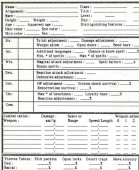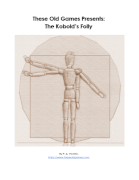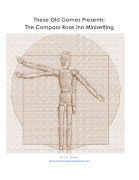Back in 1980, Dragon magazine presented an Anti-Palidin. These guys were stereotypical black hat NPCs. The logic behind them was a Palidin pledged themselves to a dark god. The problem with the article was it presented a way to generate an Anti-Palidin. The same idea was repeated a year later with the Drow in Fiend Folio, character stats for monsters.
The message was "These aren't exactly monsters, they are more like characters."
People are going to generate evil characters for a lot of reasons. Giving them a tool to do so isn't always a great idea, but the genie is out of the bag. Having evil characters in the party is problematic. How can the party hold together if half the party is trying to kill the other half?
I never exactly had this issue for a couple of reasons. I would allow mixed-alignment characters in the party. That is the players' problem to sort out. I have found that player characters tend to moderate themselves in a party. Somehow, people find an accord:
"Out of the goodness of my heart, and 1,000 gold pieces, I can heal you."
"For a dirty thief, you keep good friends."
The alignment system in D&D is wonky. It doesn't really mean anything. Good player characters can do bad things and evil player characters can do good things in the right circumstances. There aren't any consequences for being good... or evil. If you want to switch, there are even rules for changing alignment that in my opinion, suck. They are geared to a particular campaign in the mind of the author of the books. They don't make sense in every setting.
I DO have a problem with inherently evil races in D&D and it's a problem you'd never expect.
I do voices for NPCs. This creates memorable characters, monsters, and scenarios. The downside is it also conveys tone and information that might be a mismatch for players expectations:
Kobold: "I am going to cut your boots off and wear your feet like boots!"
10th level Paladin: "Snicker. Just you? Or both of you?"
Kobolds: "Shit."
Obviously, 2 Kobolds mean nothing to a 10th-level party. Against first-level characters, they represent some sort of threat, but not for battle-hardened characters. This is villain decay large writ. It is inevitable.
In some respects, using voices and tone gives my campaigns a fairytale-like vibe. What was once fearsome has become childish. Kobolds, goblins, orcs, etc. all become not threatening no matter how evil they are. Yes, you can give them some punch by cranking up the number appearing, but that has nothing to do with evil. 1,000 rats, yaks, or kobolds are dangerous to anyone. Plus rats and yaks aren't evil regardless of their numbers.
Once the player characters hit a certain level, things like "evil" become nuanced. One example is my character,
Magarven. He is a Drow PC adapted to be an NPC. He is clearly evil, but he's also an excellent dinner companion. He (probably) won't try to kill you. But he is still evil. He is gunned up like crazy, but the thought of killing isn't the first thing on his mind.
The same thing happens to the thieves' guild that harrassed the characters at a low level. Compared to a world-ending lich, exactly how evil are they in comparison? They represent a different threat that has nothing to do with what kind of evil they are.
I think there is an impetus to conflate evil with competence or ability. There are a lot of evil things out there that simply can't be enacted because they are not well thought out. Selfish people sabotage themselves all the time. Sure, he is a go-getter, but what the heck is he go-getting?
Why do I let "the evil races" like kobolds not behave evilly? Why do I let players play them?
Really it is a combination of the fairytale aspect of my gaming plus I can't really force the players or the monsters to behave a certain way, despite labels. Honor is nuanced, just because someone does something "good" doesn't mean they are out for the betterment of others.
The Great and Power Sauron once said, "Don't kill the hobbits! Bring them to me."
Guess what? Orcs, goblins, and every other minion of his didn't try to kill the hobbits too often. Nice of them, isn't it? No. They are all still evil, no matter how much food and drink they provide Frodo and Sam.
Evil to me means someone isn't honoring the social compact and bonds between living creatures, but it doesn't mean blindly doing so. There is also a component of self-delusion, the idea that doing evil becomes normal and the actor honestly believes that it is totally normal to do evil things. They are going to say they aren't evil at every opportunity. That is yet another violation of the social compact, although this one is oddly internalized. Add in the fact that if the villain sucks at their life and you get a bit of comedy or tragedy.
That is good storytelling without ramming the PC's into drawing your conclusions or messages. One player might find it funny, a second finds it tragic and the third simply wants to throw dice and fists and sees no problem with whatever these villains are doing so long as justice prevails. The DM has offered a situation to be considered without forcing a particular point of view.
The same goes for good characters. Are Palidins expected to heal downed enemies because that is what they would do to be kind? Maybe, but probably not. The players may or may not think of it or have another response based on the situation.
Brainless creatures are much easier to play as straight-up evil. Everyone gets that you shouldn't talk to zombies or skeletons. It's all about agency and the undead have none, but your average creature does have agency.
If there is an Assassin and a Paladin in the party, and one is good and one is evil, what of it? The players have to decide what to do. It makes no difference if I say Half-Orc and Kobold. The players are in control of their actions, just as much as I am in control of the NPCs and monsters. If I decide to do something engaging and the players decide they don't want to fight, then maybe we have Tea with the Black Dragon.
Which is a classic, BTW.










